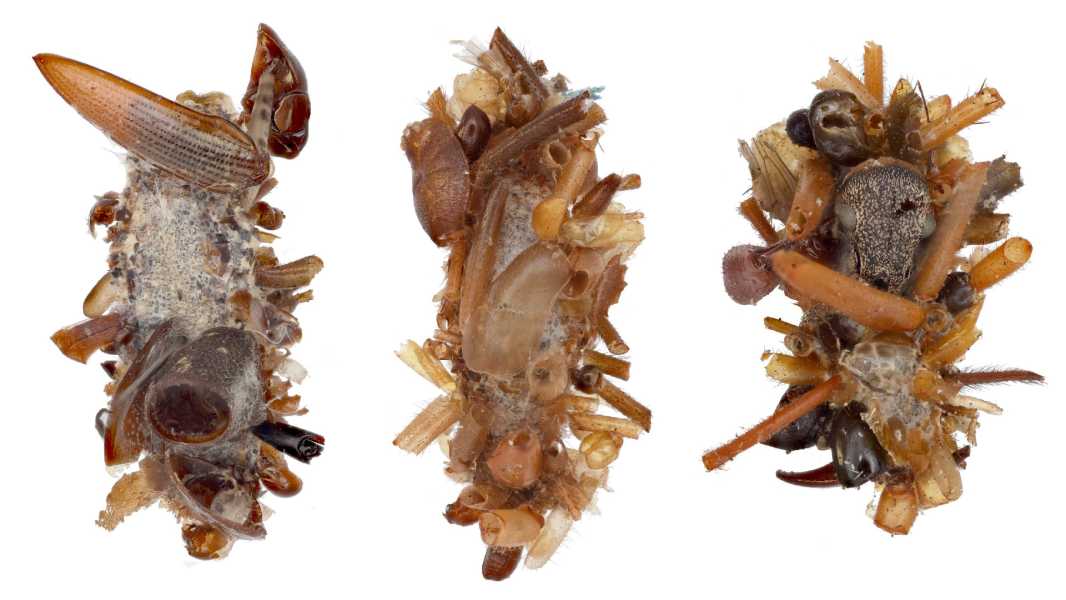
Bone collection boxes. Silk containers are decorated with the remains of previous meals, including fly wings, ant heads, weevil heads, and bark beetle abdomens. (Photo courtesy of Rubinoff Lab, Department of Entomology, University of Hawaii, Manoa)
Name: Bone Collector Caterpillar
Habitat: In a web on one of the mountain ranges of the island of Oahu, Hawaii.
What it eats: flies, weevils, bark beetles, ants and any arthropods caught in the web.
Why it's interesting: The bone hoarder isn't just a very hungry caterpillar — it has a taste for flesh. And after it finishes its meal of eating dead or dying insects caught in its web, the bone hoarder covers itself with parts of its prey, like its legs, wings, or heads, for camouflage to avoid being eaten.
The newly discovered caterpillar inhabits a roughly 6-square-mile (15-square-kilometer) area in the Waianae Mountains on the island of Oahu and lives exclusively in and around webs, logs, tree hollows, or rock cavities. The bone-collector uses the dark environment to its advantage: If the huntsman spider spots movement in its web, it will immediately attack the intruder. However, under the cover of darkness, the silk sheath of inedible body parts that envelops the caterpillar resembles or tastes like the previous week’s leftovers. This strategy appears to be effective, as the caterpillars have not previously been observed being eaten by spiders or wrapped in their silk, according to a study published in the journal Science.
The bone collector is a member of the genus Hyposmocoma, a small moth native to Hawaii known for its ability to spin mobile silken containers. While other species may decorate their shelters with fragments of algae or lichen to imitate tree bark, no other known species of Hyposmocoma recognizes random insect parts and attaches them to its body.
The species evolved at least 6 million years ago, making it older than Oahu, the researchers said. This suggests that the bone-collecting moths migrated from an older Hawaiian island that has since disappeared to reach their current forest location.
Image 1 of 2
Sourse: www.livescience.com





